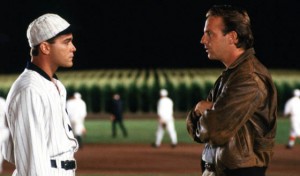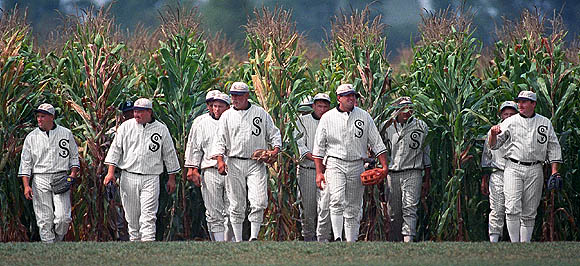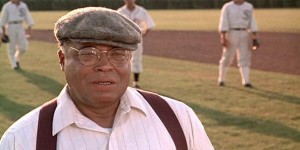The 1989 drama and tear-jerker Field of Dreams kind of works as a comedy, if you just described the plot to someone who has never seen it. “Hey man, this ex-Berkley hippie from the 1960s moved to Iowa, where he lives as a farmer with his wife and kid in the 1980s, and like dude, the man starts hearing voices in his cornfield, but they’re like super vague bro.
And then dude, the main character plows over his corn to build a baseball field, where a bunch of ghost baseball players show up, and some people can see that, but others can’t man.
And then the dude needs to go to Boston to find this reclusive radical writer/activist and then the ghost of this doctor in Minnesota. Crazy, bro, I know!”
Yes, the Field of Dreams plot kind of sounds like a bad acid trip or strange late night ramblings from the biggest stoner who lived on your dorm floor.
Nevertheless, it is a timeless classic, and that was the conclusion me and the two other co-hosts reached on the sports movie podcast “Goals on Film” (listen to that here)
Now is the perfect time to re-analyze Field of Dreams, with the second annual real-life Major League Baseball game taking place there on Thursday (game preview linked here)
As someone who has actually been to the movie site, and played catch with my dad there, I am curious to see what they have done to the place since my visit, 22 years ago.
Back then it was just the ballfield and the farmhouse. It was really nice to see at the time, but now that MLB and their media partners have so badly oversaturated and horribly overhyped the Field of Dreams site, it badly takes away from the appeal.
Last year’s game presentation, and the broadcast of it, left so much to be desired. Kevin Costner took forever to walk out onto the field, from the corn in order to maximize his screen time. The stalling was intentional and boring. Same with his annoyingly long interview on television, nobody won with that.
And then you have the atmosphere at the ballpark. A 1910s scoreboard, but modern live music. It was all an example of weirdness- mixing up numerous eras anachronistically.
Overall, MLB would have you believe that Field of Dreams is an A+ movie, but that’s only because Terrance Mann’s speech near the end serves as the perfect marketing vehicle for the game.
What Mann says about baseball itself, about its nostalgic qualities and how that makes it innately good, is exactly what MLB sells. It’s the perfect summation of how MLB promotes itself, and seemingly always will. It’s #ThrowbackThursday all the time with baseball, and it’s a very effective marketing and branding tool.
What a treasure trove of 1980s @cubs @WGNTV @WGNRadio Harry Caray era themed knick knacks my girlfriend Kristy found and gave me!!
This is like a @Super70sSports and/or @drunkharrycarey twitter posting. #ItsDifferentHere @IBWAA pic.twitter.com/b2V1rf41dn
— Paul M. Banks (@PaulMBanks) August 1, 2022
As you can see from the tweet above, this angle even works on me. In reality, Field of Dreams is more of a B+, or B graded movie, but Major League would have you believe it’s the greatest film of all-time. The key here is to try and remember Field of Dreams the movie, as we knew it once before, prior to the days of Major League Baseball obnoxiously commodifying it.
We shouldn’t let that take away from the film itself.
RIP to Ray Liotta by the way, a true legend among legends. He really stole any and every scene he was in at Shoeless Joe Jackson.
Paul M. Banks is the owner/manager of The Bank (TheSportsBank.Net) and author of “Transatlantic Passage: How the English Premier League Redefined Soccer in America,” as well as “No, I Can’t Get You Free Tickets: Lessons Learned From a Life in the Sports Media Industry.”
He has regularly appeared in WGN, Sports Illustrated and the Chicago Tribune, and he co-hosts the After Extra Time podcast, part of Edge of the Crowd Network. Follow him and the website on Twitter and Instagram.





